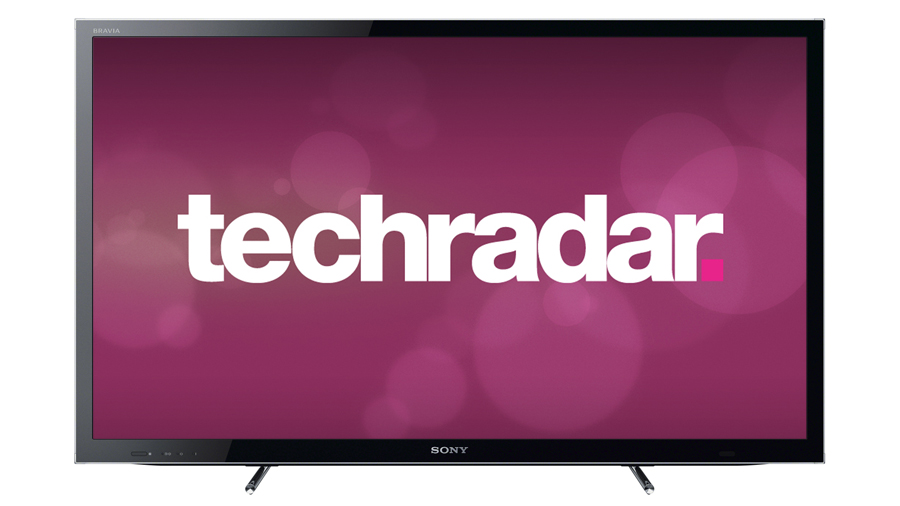TechRadar Verdict
Pros
- +
Potentially good 2D
- +
Crosstalk-free 3D
- +
Excellent online features
- +
Fair value
Cons
- -
Input lag gaming issue
- -
Poor Home menu
- -
Pictures not the brightest
- -
Backlight inconsistency
Why you can trust TechRadar
In the nick of time, Sony has finally got its flatscreen TV act together, delivering with its flagship HX853 series arguably the best-performing LCD TVs ever. So it's with real enthusiasm that we take receipt of the first model from the brand's new step-down series, the Sony 32HX753. If this can manage to deliver most of the quality of the HX853s for a bit less money, then happiness surely awaits...
The Sony KDL-32HX753 follows the latest evolution of Sony's Monolithic design by adding a glimmer of silver around the bezel's outer edges - though it doesn't feel as well built as the HX853 televisions.
So far as its features are concerned, the 32-inch TV's headliners are its active 3D playback - now supported by a native 200Hz panel versus the 100Hz one used on last year's disappointing EX7 series - and its use of Sony's new, video-rich SEN online platform.
What's more, the Sony 32HX753 supports its online functionality by providing built-in Wi-Fi.
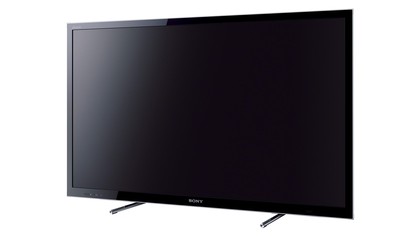
The core technology behind the 32HX753's screen is LCD with an Edge LED lighting system. It should be stressed right away, though, that the 32HX753 doesn't use the local dimming system that was put to such superlative use with the HX853 models.
The Sony 32HX753 costs £699 (around $1,095) in the UK, but if you want something a bit bigger than the 32-inch TV, you can also get the 40-inch 40HX753 (£899), 46-inch 46HX753 (£1,199) and 55-inch 55HX753 (£1,549), while if you want the absolute best Sony picture quality currently available you should step up to the 46HX853 or 55HX853.
Rival models are tricky to define precisely, given the huge wealth of televisions available this year, but the most likely direct competitors would be the Panasonic DT50 or possibly Panasonic ET50 series, the LG LM660 series and Samsung ES6800 or ES6300 series.
Sign up for breaking news, reviews, opinion, top tech deals, and more.
Features
After undertaking an extensive round of consumer research, Sony has this year softened the striking but rather stark and masculine look of its Monolithic TV design approach by reducing the bezel size a bit, softening corners, and applying a sliver of outer silver trim to its TV's extremities.
The Sony 32HX753 looks fine on the back of this shift, though its reduced build quality means the design doesn't look quite as elegant as it did on the step-up HX853 Sony TVs.
The relatively small size of this 32-inch TV also doesn't really give the design quite enough room to shine, so that it doesn't stand out from the crowd as much as Sony's previous Monolithic TVs have tended to.
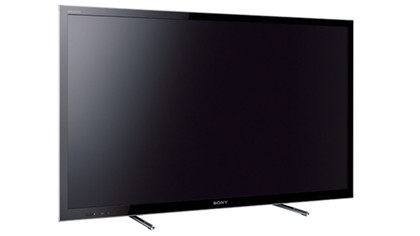
On the upside, though, the way the TV sits low and slightly angled back on a pair of minimalistic legs is very pleasant and reduces the extent to which the set intrudes into your living space.
Connections are ranged helpfully around the side and bottom edge of the Sony 32HX753, making it easy to wall-hang the set. They're also pleasingly plentiful for an affordable 32-inch TV, including four HDMIs, a pair of USBs, and both LAN and integrated Wi-Fi for accessing material stored on a DLNA PC or Mac and Sony's SEN online content platform.
Clearly the features associated with some of these connections warrant further attention. The HDMIs are v1.4 in spec, so that they're compatible with Full HD 3D Blu-ray feeds. The USBs, meanwhile, can play back a good if not exhaustive selection of multimedia video, photo and music formats, as well as enabling recording to USB flash drives from the built-in Freeview HD tuner.
As for the LAN/Wi-Fi, this is supported by Sony's mostly likeable new Homestream software (free to download for Mac as well as PC) to enable streaming of a wide variety of material from almost any computer. Or, of course, it can provide your portal to the Sony Entertainment Network online system.
Pressing the new SEN button on the remote control thankfully immediately throws up a new 'hub' for the online services that's light years ahead of the cumbersome, ugly menu system used by last year's Bravia Internet Video TVs.
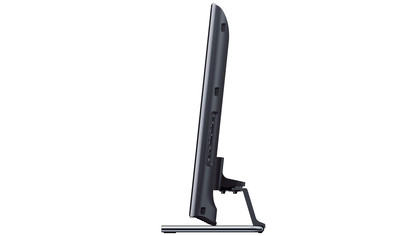
On the left you get a reduced version of the picture you were watching, along with - if you wish - a ticker-tape presentation of your Twitter feed. This is an excellently unobtrusive way to integrate social media into a TV environment.
Ranged across the screen to the right of the reduced TV picture are various sections of content under Apps, Video, Music and Favourites headers. The presentation for all these sections is impressive, with lots of HD icons, and the content levels are impressive too.
You don't get the sheer overwhelming number of services and apps found on the Smart TV platforms from Samsung and LG, perhaps, but Sony's tradition of quality over quantity where online content is concerned continues to impress.
Among the highlights of what's on offer are BBC iPlayer, Demand 5 (Channel 5's catchup service), BBC News, Sky News, Skype (if you add an optional extra camera), Twitter, Facebook, Lovefilm, Netflix, EuroSport, YouTube, Sony's own 3D content channel, Euronews, Crackle, aolHD (featuring Engadget and Huffington Post content, among other things), WIRED, Blinkx, BillaBong, style.com, DailyMotion, eHow.com, golflinks and Moshcam.
Sony also includes its own app content, in the form of a Sony Entertainment Television library, its increasingly impressive Video Unlimited film and TV streaming service, and Sony's (also increasingly excellent) Music Unlimited service.
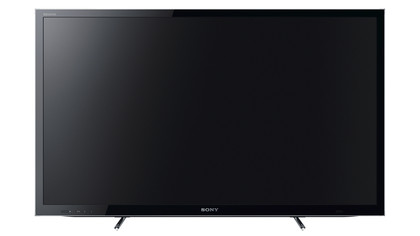
We guess some might take issue with the way Sony gives its own content platforms their own large Video and Music categories while rivals such as LoveFilm and Netflix get shoved together on the second page of the Apps section. But Sony has at least provided these alternative film sources, so it's not like they're actually forcing you to use only their own music and video platforms.
Sony has also started to introduce a few smaller apps, such as a couple of fairly basic games and on-board clock and calendar widgets. But it's the extensive selection of video streaming sources that matters and continues to make Sony arguably the most satisfying online TV service provider.
If you're a die-hard picture tweaker, the Sony 32HX753 is reasonably well equipped with fine tuners to keep you happy. There's a solid selection of thematic picture presets (some perhaps unhelpfully stored under a separate 'Scene Select' section) to get you started.
In here you can tweak the backlight, brightness and contrast settings separately; the amount of MPEG, dot and standard noise reduction; the type of motion processing being used; the level of black level and contrast enhancement; the set's basic gamma level; and the bias and gain of the red, green and blue colour elements.
There are a few other processing elements you might want to explore as well, such as detail and Edge enhancers, and a 'Clear White' white level booster. But chances are that you'll get the best results for most of the time if you leave these peripheral options turned off.
The motion processing warrants a bit more investigation. Because while the Sony 32HX753 'only' uses a MotionFlow XR 400 system versus the 800Hz-like XR 800 system of the HX853 series, it still has the same surprisingly wide-ranging selection of different processing options. To be honest, most of these are best avoided - even the new Impulse mode, which sounds interesting on paper but ultimately leaves the picture flickering like an old 50Hz CRT.
The only mode you will probably consistently get much joy out of without feeling images look a little syrupy or over-processed is the Clear setting.
Two final points to mention are that the Sony 32HX753 only has Sony's X-Reality processing engine rather than the HX853's Pro version, and that the TV uses frame dimming rather than the HX853's local dimming for its Edge LED lighting.
With respect to the X-Reality situation, it means that the Sony 32HX753 won't be as adept at upscaling standard definition TV content - especially heavily compressed content from the internet.
As for the use of frame dimming rather than local dimming, this means that while the TV set can reduce and increase all of its lights at once in response to picture content, it doesn't join the Sony HX853 series in enabling different segments of LEDs to deliver different levels of brightness. This has the potential to significantly reduce the 32HX753's contrast performance versus its more expensive siblings.

John has been writing about home entertainment technology for more than two decades - an especially impressive feat considering he still claims to only be 35 years old (yeah, right). In that time he’s reviewed hundreds if not thousands of TVs, projectors and speakers, and spent frankly far too long sitting by himself in a dark room.
